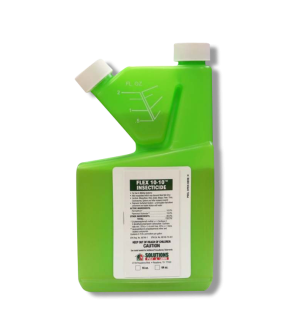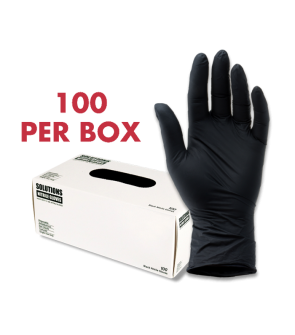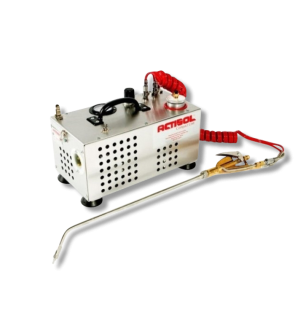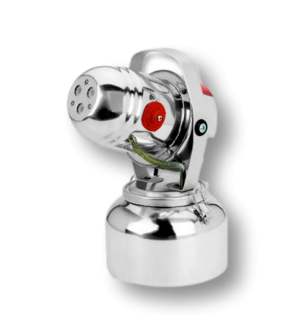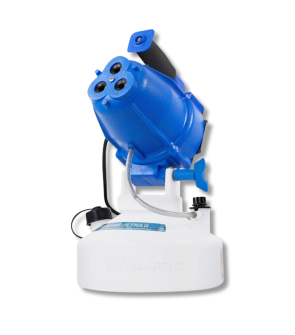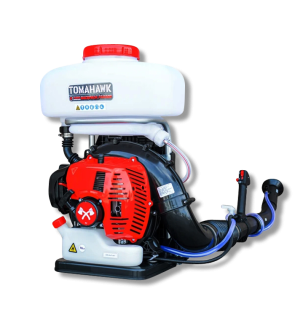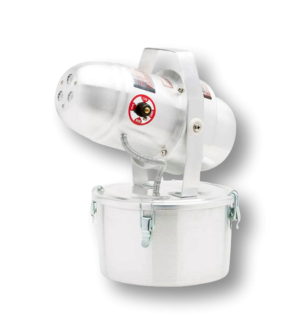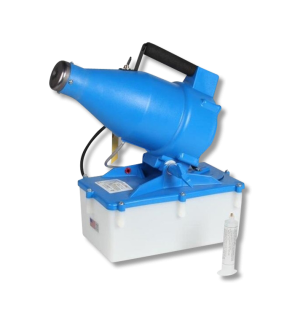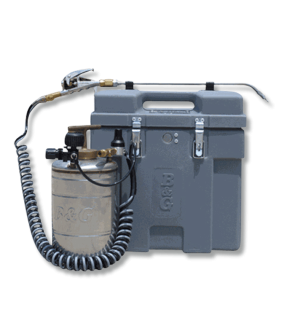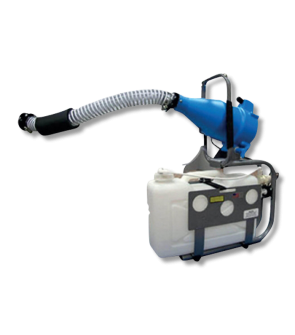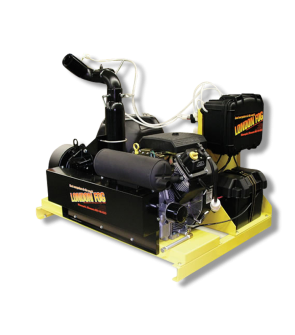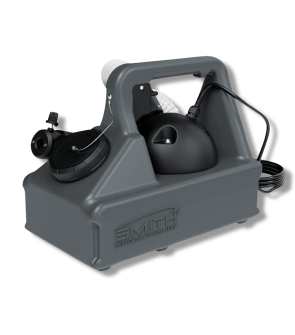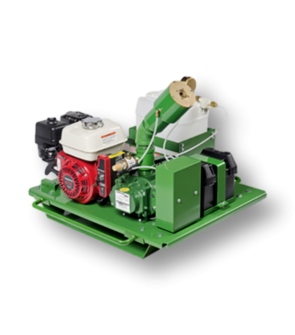Gain access to personalized product screening, the best pricing, rewards, and more!
Most Effective Products
ULV (Ultra Low Volume) Foggers
A ULV Fogger (also known as a cold fogger) is a piece of equipment designed to disperse pesticide chemicals in the air as a mist or fog. It is popularly used in pest control situations to control insects such as mosquitoes, flies, bed bugs, and others.
A ULV Fogger treats an entire space rather than a specific surface, like a spray or dust. The mist it creates expands and flows throughout the space being treated, and the fog can go anywhere air can go. This allows treatment in areas that would be hard to access directly.
ULV Foggers vary in size and form, from stationary units to backpack-style and even small handheld units. To use most ULV foggers, fill the tank with a premixed pesticide solution and aim the spray nozzle at the area you wish to disperse the product into. If you are unable to find the information you need below, please contact us. We’re here to help.
What Is ULV?
ULV stands for Ultra Low Volume and refers to the technology where spray droplets are released into the air at low pressures, creating a fine cold fog or mist. Unlike a thermal fogger, which uses heat to produce fog, ULV Foggers create fog by using motors that produce a high-powered, low-pressure air stream into which the pesticide is then introduced.
Our Recommendation
For Indoor Applications
For fogging indoor spaces such as attics, crawl spaces, and rooms, we recommend the B&G Flex-A-Lite 2600 Fogger. Its simple, no-frills design makes it easy to use and maintain. Its smaller profile makes it easy to store between uses or for transportation between jobs.

We recommend using Stryker 100 for indoor fogging. This insecticide is ideal for fogging indoor spaces because once it dries, it loses effectiveness. It lacks a strong residual effect but is safe once it completely evaporates.

For Outdoor Applications
If you wish to treat a large outdoor area such as a garden, lawn, or other exterior landscape, we recommend using a backpack unit. Our favorite is the Tomahawk TMD14 Backpack Fogger, which has a large 3.5-gallon tank capacity and can disperse product material in as little as 30 minutes.

With this unit, we recommend using Flex 10-10 Insecticide. Flex 10-10, unlike Stryker 100, maintains a strong residual effect long after application, which is ideal for outdoor application.
Safety Equipment
No matter where you’re fogging, safety equipment is a must. Foggers are designed to treat whole areas of space, not just specific surfaces. They suspend droplets of harmful chemicals in the air to treat every corner and crevice. Full skin and eye protection, as well as a full respirator, are required. See our Protective Equipment page for more on safety equipment.
User Guide
Step 1: Put on Protective Gear
The first thing you should always do before working with any hazardous chemicals is wear protective gear. Again, full skin, eye, and respiratory protection are highly recommended when fogging. Remember, all our chemicals have a section on the label detailing the minimum safety requirements for the product.
Step 2: Fill the Reservoir
The first step when using a fogger is to fill the reservoir with a mixed pesticide solution. Always mix pesticides according to label instructions. With the B&G Flex-A-Lite unit, always mix BEFORE adding the product to the reservoir. Pesticides may be mixed directly into the reservoir of the Solo 451 unit. Only mix what you expect to use so there will not be any leftover pesticide solution. Many pesticide concentrate labels do not recommend storing mixed products between uses.
Step 3: Apply The ULV Fogger To Target Areas
Before turning on your ULV fogger, adjust the flow rate as low as possible. Note the B&G Flex-A-Lite unit will begin fogging as soon as you turn it on. Please turn on your fogger unit by starting it or flipping the power switch. Adjust the flow rate to your desired setting and direct the spray nozzle where you want to disperse the fog. Allow the fog to fill the space to be treated, moving the spray nozzle as needed to disperse fog throughout the space.
Inspection and Maintenance
It is always a good idea to briefly inspect all equipment before use. Begin with a visual inspection, add a small amount of water to the reservoir, and run the unit to ensure there are no leaks. On the Solo 451, remember this is a gas-powered unit, so make sure to check the fuel level.
Step 1: Visual Inspection
Carefully examine the unit, checking for any obvious damage. If damaged, many components, such as tubing, may need to be replaced.
Step 2: Leak Check
Put a small amount of water in the reservoir. Turn the unit on and create some harmless mist. If you notice any puddles forming, you're leaking. Find the source and determine if the leak is from a loose connection or damaged components.
Parts
Generally, a fogger consists of a reservoir, a motor, a pump, and a spray nozzle. Depending on the model, each of these also breaks down into various subcomponents. It is always best to consult the specific product’s manual for more detailed information.
Reservoir
The reservoir holds the pesticide product until the pump takes it up to be turned into fog. Depending on the model, it can vary in size from about 1 to 5 gallons. The B&G Flex-A-Lite has a capacity of 1.5 gallons, while the Solo 451 Mist Blower has a capacity of 3.4 gallons.
Motor
It supplies the energy needed to create and disperse the fog. Depending on the model, this can be either an electric or gas-powered motor. The B&G Flex-A-Lite has an electric motor and plugs into a standard 110V three-prong outlet. The Solo 451 Mist Blower uses a gas-powered 2-stroke engine and will require fuel.
Pump
The pump moves the product from the reservoir, creates the fog, and pushes it out of the spray nozzle. The B&G Flex-A-Lite has a fairly simple pump, while the Solo 451 Mist Blower has a pump that can be removed or reconfigured for alternate applications, such as spreading granules.
Spray Nozzle
The spray nozzle is the dispersal point for the fog created by your fogger unit. Direct the nozzle toward the area you wish to fog. The mist you create will expand and move on its own, but by shifting the spray nozzle, you can accelerate this process and increase the overall coverage area.
Both of our recommended units have a switch near the end of the spray nozzle to adjust the flow rate, the rate at which the pesticide product is used to create the mist. Please remember never to point the spray nozzle directly at pets or other persons in the application area.
Key Takeaways
- ULV Foggers create fog by moving cold air, as opposed to thermal foggers, which use heat.
- ULV Foggers are an ideal option if you need to treat an entire space, such as a room's floor-to-ceiling treatment or an entire garden. The mist it creates expands and fills the entire space, as opposed to simply landing on one surface, as with a spray.
- The space to be treated determines the equipment best suited to the job. A smaller electric fogger, such as the B&G -A-Lite, is recommended for indoor fogging. A larger backpack unit, such as the Solo 451, is more suitable for outdoor fogging.









